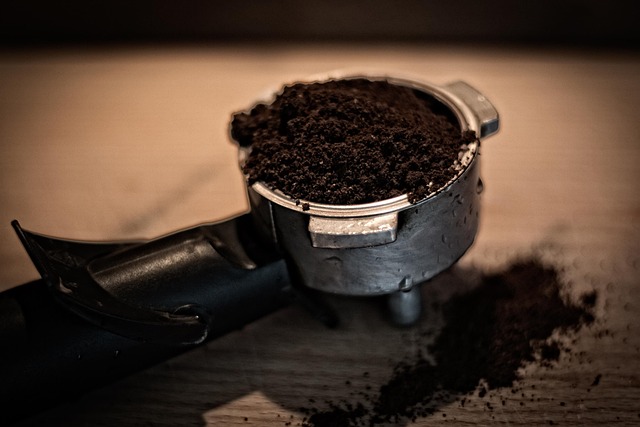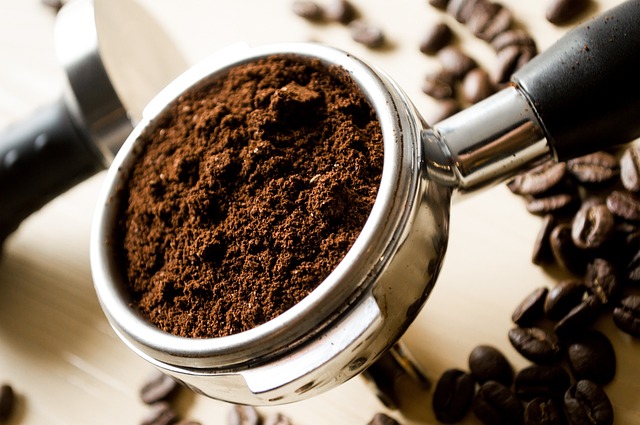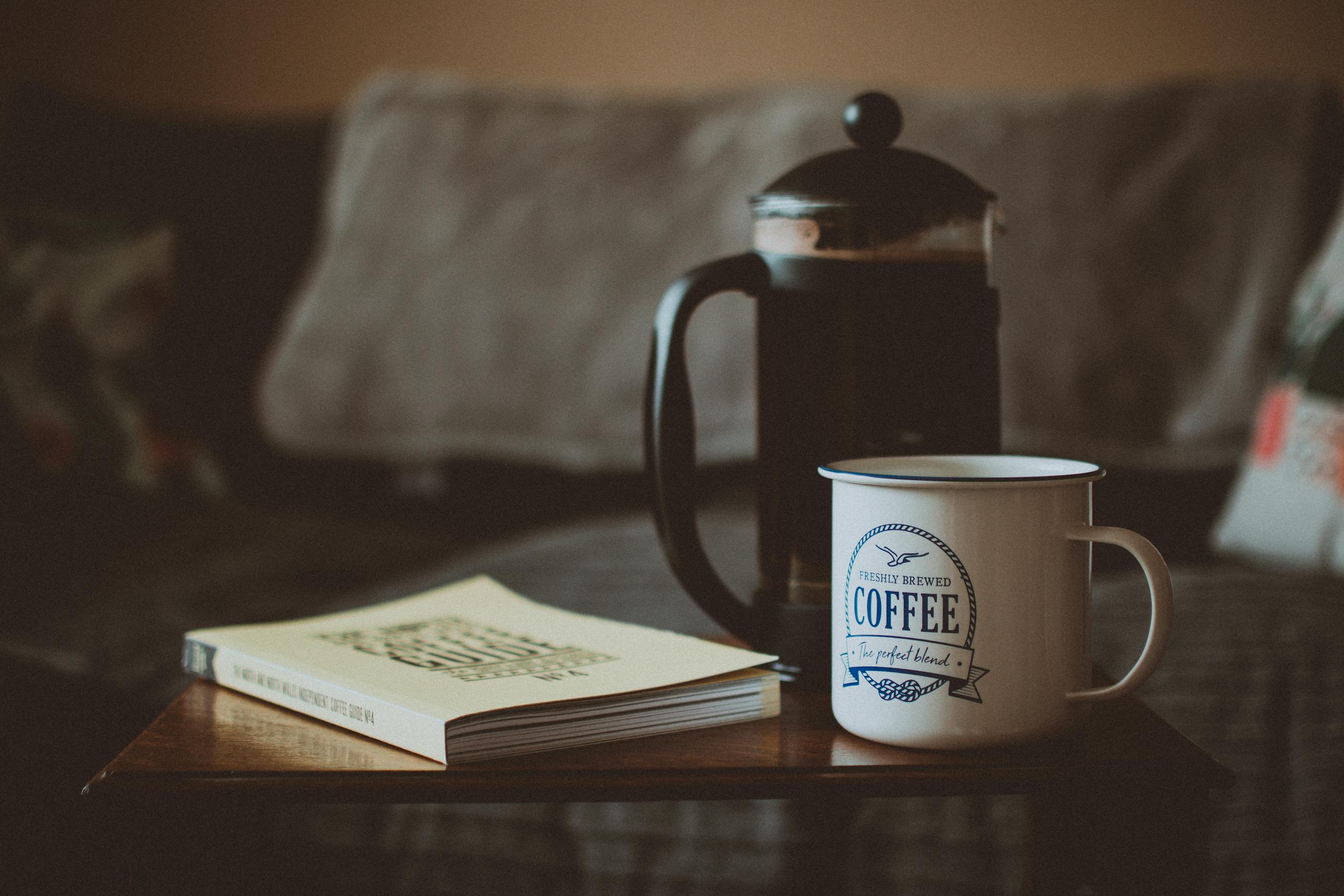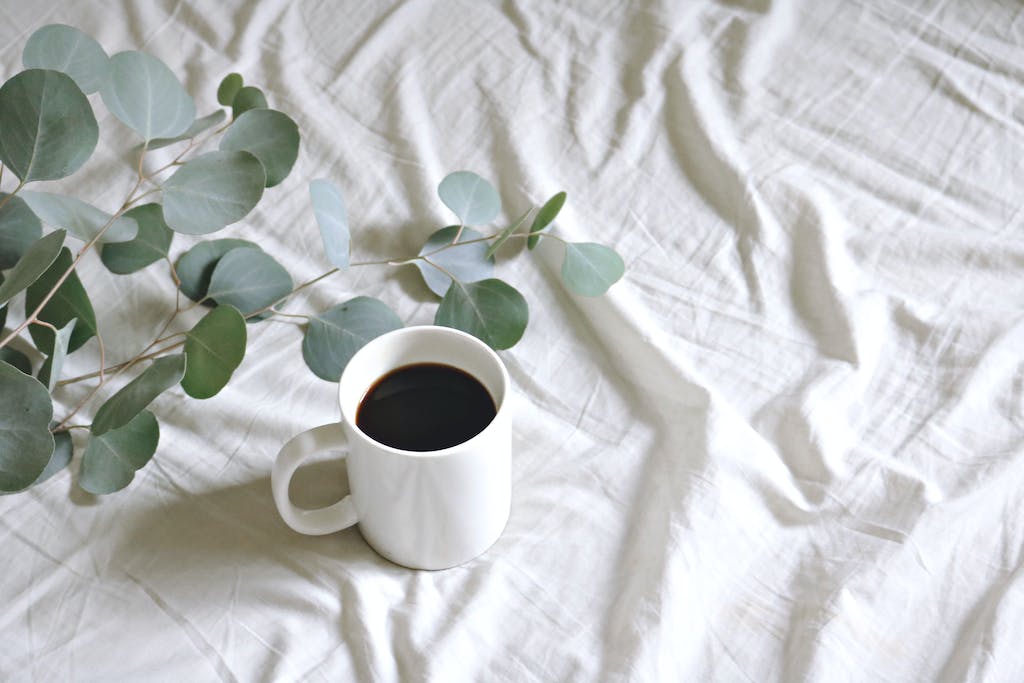Eco-Friendly Ways to Put Old Coffee Grounds to Good Use
There are some affiliate links below, but they are all products I highly recommend. For more info, view my disclosure here.
Coffee isn’t just for drinking! If you’re a coffee lover, almost certainly you end up with a lot of used coffee grounds every day. But did you know that those used grounds have multiple uses? From cleaning to gardening, there are plenty of eco-friendly ways to reuse your old coffee grounds. In this article, we’ll explore how to put those grounds to good use and help the environment at the same time.
Have you ever thought about why people say that “one person’s trash is another person’s treasure?” Well, when it comes to old coffee grounds, it couldn’t be more true. Coffee grounds are a sustainable way to reduce waste and can be used in many different ways. Not only can they be reused in the garden or kitchen, but they also serve as an excellent fertilizer for soil and plants due to their high nitrogen content.
So if you’re looking for some creative ways to recycle your morning cup of joe, look no further! We’ll cover all sorts of interesting ideas on how to make use of your old coffee grounds in an eco-friendly manner. With these tips and tricks, you can get the most out of your used coffee grounds and feel good doing it!
1. Composting Coffee Grounds
When it comes to eco-friendly ways to put old coffee grounds to good use, composting is a great option. Not only does it reduce the amount of waste going into landfills, but it also provides an excellent source of nutrients for your garden or lawn. Composting coffee grounds can be done in a variety of ways, depending on available space and resources.
For those with limited space, an indoor compost bin or worm bin works well. This method requires a bit of effort and regular maintenance, such as turning the pile and ensuring the correct balance of moisture and air circulation. For larger spaces, an outdoor compost pile is ideal. This method involves less maintenance but more space for the materials needed for proper composting. It’s important to remember that coffee grounds should always be combined with other organic material such as grass clippings, leaves, and kitchen scraps in order to create a successful compost.
Whether you opt for an indoor or outdoor compost setup, reusing coffee grounds can help create nutrient-rich soil for your garden or lawn while reducing waste at the same time. With some research and preparation beforehand, you’ll soon have beautiful plants thriving in this natural soil amendment!
2. Natural Weed Killer
Using coffee grounds in the garden can help keep weeds down and make your plants healthier. Ground coffee is a great natural alternative to chemical weed killers, as it’s not toxic like some of the store-bought products. Plus, you don’t have to worry about any nasty residue lingering in your soil.
To use your leftover coffee grounds as a weed killer, simply sprinkle them around the base of your plants. The caffeine content in the grounds will help suppress weeds without affecting your other plants. You can also mix them with water and pour it directly onto weeds to target them specifically. Coffee grounds are best used on warm days, when they’ll have time to dry out before getting rained on.
It’s important to note that while this method will suppress most weeds, it won’t necessarily kill all of them – so be prepared to do some manual weeding if needed. However, using coffee grounds is still an effective way of keeping your garden healthy and eco-friendly with minimal effort. All you need is some leftover coffee from your morning cup – which means no extra trips to the store for chemicals or sprays!
3. Reusing As A Scrub
Reusing old coffee grounds as a scrub is an eco-friendly way to put them to good use. This can be done in various ways, such as combining them with some olive or coconut oil and rubbing the mixture onto your skin gently. This creates a natural exfoliant that will help remove dead skin cells and leave your skin feeling smooth and soft.
It’s important to note that you should avoid using too much pressure when scrubbing with coffee grounds, since this could cause irritation to the skin. Instead, it’s best to use light circular motions so that you’re able to get the most out of your scrub without damaging your skin. Additionally, make sure that you’re not using too many grounds, as this could also lead to potential irritations or reactions on the skin.
To conclude, reusing old coffee grounds as a scrub is an easy and cost-effective way of putting them to good use in an eco-friendly manner. By combining them with some oil and rubbing it onto the skin gently in circular motions, you can create a natural exfoliant that will help remove dead skin cells while also avoiding any potential irritations or reactions on the skin.
4. Creating An Insect Repellent
Coffee grounds can be used to make an effective insect repellent. This eco-friendly way of repurposing old coffee grounds is quite simple, and can help you save money at the same time! All you need is some coffee grounds and a few other common household items.
To make the repellent, mix together equal parts of coffee grounds, vegetable oil, and dish soap. Then spread it over areas where there are bugs; this will deter them from entering because of the smell. You can also add some essential oils to the mixture if you like; lavender and eucalyptus have been known to work well.
It’s important to remember that this repellent isn’t permanent, so you’ll need to reapply it every couple of weeks in order to keep bugs away. It’s also important to remember that this mixture should never be sprayed on plants or animals as it could harm them. With these safety tips in mind, you’re ready to start using your homemade insect repellent! Give it a try – you might be surprised at how effective it can be.
5. Coffee Soap
Coffee soap is an easy and eco-friendly way to put old coffee grounds to good use. This creative project can help you get rid of grounds that have been sitting in your cupboard and it will also leave you with a unique homemade product. All you need are some basic ingredients like coconut oil, olive oil, shea butter, and essential oils – plus the leftover coffee grounds, of course!
Making your own coffee soap is a fun activity that’s perfect for any DIY fan. It’s a great idea for a weekend craft project with the family too; everyone can get involved in measuring and mixing the ingredients. Plus, it’s a great way to teach kids about recycling and sustainability.
When making your own coffee soap, start by melting the coconut oil and shea butter until they’re liquid. Then mix in the olive oil along with the essential oils of your choice. Finally, fold in the leftover coffee grounds so they’re evenly distributed throughout the mixture. Put it all into molds or tins and let it cool overnight before using it as normal soap. Not only will you be reducing waste but you’ll also be creating something useful out of everyday materials – all while having fun!
6. Exfoliating Face Mask
As a way to repurpose those old coffee grounds, an exfoliating face mask is a great option. By combining the grounds with other ingredients such as honey, coconut oil, or olive oil, you can create your own natural scrub that will help remove any dirt and debris from your skin and leave you feeling refreshed. The granular texture of the grounds will gently scrub away dead skin cells and help reveal brighter, younger-looking skin.
It’s important to remember to use slightly cooled down coffee grounds for this mask. Grounds that are too hot could cause irritation or even burning of the skin. Before applying the mask, it’s also a good idea to do a patch test in order to make sure that you don’t have any adverse reactions to any of the ingredients used. Additionally, if you have sensitive skin, it may be best to avoid using this mask altogether as some people may find that it’s too abrasive for their skin type.
Creating an exfoliating face mask with old coffee grounds is a great way to give yourself a spa experience at home while also being eco-friendly and reducing waste. All you need are some simple ingredients found in most kitchens and you’ll be on your way to having softer, smoother skin in no time!
7. Fertilizer For Acid-Loving Plants
One way to put old coffee grounds to good use is as fertilizer for acid-loving plants. Coffee grounds are naturally acidic, making them an ideal choice for certain plants such as roses, azaleas and rhododendrons. Acid-loving plants need a soil PH of 6 or lower in order to thrive, and coffee grounds can help lower the soil PH to that level. To use coffee grounds as fertilizer, simply spread the used grounds evenly around the base of the plant and then water thoroughly. This will ensure that the nutrients in the coffee grounds are absorbed into the soil.
Another benefit of using coffee grounds as fertilizer is that it helps improve drainage and aeration in soil. This means that oxygen will be able to reach deeper into the ground, promoting healthy root growth and allowing plants to absorb more nutrients from the soil. Additionally, since coffee grounds are rich in nitrogen they can help promote lush green foliage growth on acid-loving plants.
In addition to providing essential nutrients for acid-loving plants, using old coffee grounds as fertilizer can be a great way to reduce waste and help preserve our environment. By repurposing used coffee grounds instead of throwing them away we can limit our environmental impact while still helping our gardens grow strong and healthy.
8. Enhancing Compost
The use of coffee grounds as compost enhancers can be an incredibly effective way to make the most out of your waste. Coffee grounds are rich in nitrogen and potassium, two essential nutrients for healthy plants. Adding coffee grounds to your compost pile can help increase the amount of organic matter it contains, leading to better quality soil for your garden or farm.
However, it’s important to remember that coffee grounds should be added in moderation. Too much can lead to an imbalance in the nitrogen and potassium levels in the soil, so try not to exceed a quarter cup per square foot of compost. You should also mix your coffee grounds into the existing compost instead of adding them on top. This will ensure that the beneficial nutrients are distributed more evenly throughout the pile.
It’s also important to make sure you use only organic coffee grounds when using them as a fertilizer or soil enhancer. Non-organic grounds could contain pesticides or other chemicals that could potentially harm your plants or crops. When done correctly, though, adding old coffee grounds to your compost is a great way to reduce waste and give your plants some extra nutrition at the same time!
9. Natural Dye For Fabric
Using old coffee grounds can be an eco-friendly way to reduce waste and put them to good use. One great way to do this is by using them as a natural dye for fabric. This method not only helps the environment, but also produces beautiful, one-of-a-kind patterns on fabrics.
The process of making coffee dye is relatively simple and can be done with some basic supplies found around the house. To begin, you’ll need a pot of boiling water, your used coffee grounds, some fabric or yarn, and a few tablespoons of vinegar or salt. Once you have all your supplies ready, it’s time to start dyeing! Put the fabric into the boiling water along with the used coffee grounds and let it sit for 10-30 minutes. Then add in either vinegar or salt depending on what type of material you are using and let it sit for another 10-30 minutes until it has reached the desired color.
Once your fabric has been dyed to perfection, take it out of the pot and rinse it off with cold water. You can then leave it out to air dry naturally or pop it in the washing machine if you prefer a more uniform look. No matter how you choose to finish off your project, you will have created something unique that also helps reduce waste and promote sustainability!
Frequently Asked Questions
How Long Should I Compost Coffee Grounds?
Reusing old coffee grounds is an easy way to be eco-friendly, but there are a few things to consider before deciding how to put them to use. One of the most important questions is: how long should I compost coffee grounds? Let’s explore this question to determine the best way to utilize used coffee grounds.
When it comes to composting, coffee grounds should be treated like green material in a compost pile. Green materials contain nitrogen and other nutrients that help microorganisms break down organic matter. Coffee grounds also provide microbes with energy from carbon, which helps speed up the process of decomposition. This makes them great for adding diversity and beneficial bacteria to a compost pile. However, it’s important not to add too much at once or the balance of carbon and nitrogen can become off-kilter.
The amount of time it takes for coffee grounds to break down in a compost pile will depend on the size and composition of the pile itself, as well as environmental factors such as temperature and moisture levels. Generally speaking, though, you can expect your coffee grounds to decompose within 1-2 months if they’re added in small amounts over time. In any case, regular turning of the compost pile is necessary for good aeration and efficient decomposition of all materials in the pile.
If you don’t have a compost pile or prefer another method for reusing your old coffee grounds, they can also be used as fertilizer or added directly into soil around plants that enjoy their acidic qualities (like blueberry bushes). When using this method, mix one part used coffee grounds with ten parts soil before applying directly onto plant roots or around shrubs and bushes – this will help keep things balanced and prevent any potential damage from overly acidic soils.
No matter how you choose to reuse your old coffee grounds – whether through composting or fertilizing – being mindful about how much you add at once will ensure maximum efficiency without doing harm.
Can I Use Coffee Grounds As A Fertilizer For All Types Of Plants?
Coffee grounds are a great way to eliminate waste and put them to good use, but can they be used as a fertilizer for all types of plants? The answer is yes! Coffee grounds can be used in moderation for most plants, both indoors and outdoors.
Using coffee grounds as a fertilizer provides many benefits. First of all, it’s an eco-friendly option that helps reduce waste. Coffee grounds are high in nitrogen which helps stimulate root growth and overall plant health. They also contain potassium which helps to promote flowering and fruiting in plants. Plus, the natural acidity of the grounds can help make soil more acidic, which can benefit acid loving plants like hydrangeas and azaleas.
It’s important to note that you should only use coffee grounds in moderation for most plants; too much can cause issues with pH balance and create an overly acidic environment that can be harmful to some plants. Additionally, if you’re using fresh coffee grounds, you should avoid applying them directly to the soil until they’ve had time to decompose first; this will help prevent nutrient burn from occurring. When composting coffee grounds, it’s best to mix them with other organic materials like leaves or grass clippings for optimal results.
Overall, there are plenty of uses for old coffee grounds beyond just composting – such as using them as a natural fertilizer! Used in moderation and properly applied, coffee grounds can provide many benefits to your garden while helping reduce your environmental footprint at the same time.
Is It Safe To Use Coffee Grounds As A Scrub On Sensitive Skin?
Using coffee grounds as a scrub can be a great way to naturally exfoliate and soften sensitive skin. It is made up of natural ingredients, which means it will not irritate the skin like some chemical-filled scrubs can. But is it really safe?
The answer is yes! Coffee grounds are slightly acidic, making them perfect for exfoliating without being too harsh. Plus, they contain antioxidants which help to reduce inflammation and heal any damage that has been done to the skin. This makes them a great choice for those with sensitive skin who are looking for an eco-friendly scrubbing option.
When using coffee grounds as a scrub, make sure to mix it with other natural ingredients like honey or aloe vera gel to create a paste-like texture. This will help ensure that it does not scratch your skin while still providing all of the benefits mentioned above. Once you’re finished scrubbing, rinse off the mixture thoroughly and pat your skin dry.
It’s important to keep in mind that everyone’s skin is different and what works for one person may not work for another. If you have particularly sensitive skin, do a patch test before using coffee grounds on the entire face or body area just to be sure that it won’t cause any irritation or adverse reactions. With that said, using coffee grounds as a scrub can be an awesome way to treat your sensitive skin while reducing waste and helping the environment at the same time!
What Type Of Insects Are Deterred By A Coffee Ground Insect Repellent?
Coffee grounds can be used for more than just making a cup of coffee. In addition to being an environmentally friendly way to repurpose old coffee grounds, they can also be used as an insect repellent. But, what type of insects are deterred by a coffee ground insect repellent?
The answer is that it depends on the concentration and the scent of the coffee grounds. For instance, ants and roaches are generally deterred from entering or infesting areas where there’s a strong scent of coffee grounds. However, this doesn’t mean that all types of pests will stay away; spiders, flies, and beetles may not be as easily dissuaded by the smell of coffee grounds.
In order to create an effective pest deterrent with your old coffee grounds, you’ll need to boil the used grounds in hot water first. Then spread them around your garden or house perimeter – this will help amplify the smell and make it harder for any lingering pests to get through. You can also mix them with other common household ingredients such as clove oil, vinegar, lemon juice or garlic to further increase their effectiveness as a natural insect repellent.
Using coffee grounds as an eco-friendly pest deterrent is a great way to put your old coffee grounds to good use! It’s easy to do and relatively inexpensive compared to buying store-bought pesticides – plus it won’t harm any beneficial insects like bees or butterflies that may enter your garden area either. So go ahead and give it a try – you might just find that it’s the perfect solution for keeping those pesky critters away!






